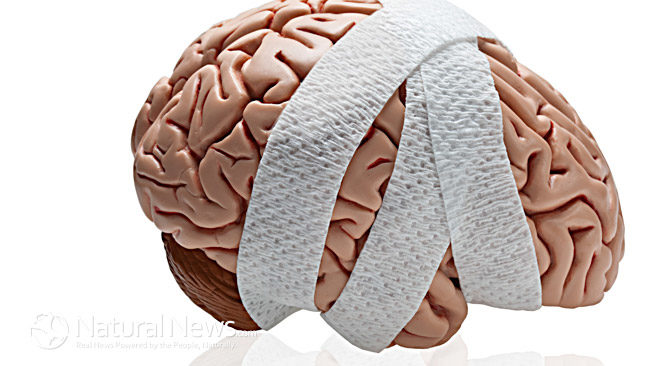Cases of traumatic brain injuries have been on the rise over the past few years. Given the fact that our head is constantly exposed, it is basically at the mercy of the surrounding environment. According to the Centers for Disease Control and Prevention, approximately 2.5 million cases of traumatic brain injuries were recorded. Sports enthusiasts are also significantly more exposed to the risk of sustaining traumatic brain injuries.
The American Association of Neurological Surgeons offered a glimpse into the top 3 sports that contributed the most cases of traumatic brain injuries. Cycling took the unwanted accolade with roughly 85,000 cases while football came in second with almost half that amount of patients. Baseball completed the top three with approximately 38,000 cases.
TBI and Sleep Disorders
As the name suggests, traumatic brain injuries have the potential to inflict permanent damage to the patient and in more severe cases, it may result in death. In other cases of brain injuries, it can alter an individual’s, ability to retain memory, communication ability and range of emotions. While these symptoms vary depending on the severity of the injury, sleep disorder is a common after-effect that affects most patients across the board. Up to 70% of people who suffered from a traumatic brain injury reported experiencing sleep disturbances.
A range of sleep disorders can present itself in the aftermath of a traumatic brain injury. Each of these abnormality requires unique and specific treatment methods to help the patient return to a normal sleep cycle. The most common types of sleep disorders include:
-
Insomnia
Insomnia is one of the most common sleep disorders that can be caused by a variety of factors that includes traumatic brain injuries. This form of disorder presents itself when patients are unable to fall asleep or constantly fail to stay asleep for a prolonged period of time.
-
Fatigue
Together with insomnia, fatigue is the most common symptom of sleep disorder that follows a brain injury. Regardless of the quality of sleep previously, patients would have trouble staying alert and would be in a constant state of drowsiness.
-
Delayed Sleep Phase Syndrome
This type of disorder is not as common but causes much disturbance to patients in the form of mixed-up sleep patterns. Patients who experience delayed sleep phase syndrome tend to report that their normal lifestyle becomes disrupted.
-
Narcolepsy
This is probably the most severe form of sleep disorder. Narcolepsy patients are susceptible to an extreme tendency to fall asleep regardless of the surrounding. They have no control over it and this disorder might present itself out of the blue without any warning.
Treatment Methods:
Independently, the occurrence of a traumatic brain injury is a worrying experience. When followed by symptoms of sleep disorders, it becomes a full blown nightmare for the patients and their immediate family members. The combination of a brain injury and the subsequent sleep disorder can often leave the brain in a state of confusion.
These patients have often required external help in enhancing their cognitive performances and improving memory capabilities. Due to the sensitivity of the situation, doctors are being extra cautious in prescribing any form of medication. Nonetheless, there are steps that patients can undertake themselves to improve their condition.
-
Avoid Caffeine
For the general population, caffeine consumption is the first cardinal sin towards achieving a sound sleep cycle. Apply the caffeine effect to patients with brain injury and sleep disorder, the results are magnified exponentially, causing dire consequences which can lead to health deterioration.
-
Strict Bed Time Schedule
This is a tedious process and requires an immense amount of patience and determination. Abide by a strict sleep pattern, going to bed and waking up at exactly the same time each day, with a maximum allowance of 15 minutes. This manually tunes the body system and forces it to adjust to a preset routine. As evidenced by a study in 2010, a regular sleep routine contributes to better sleep cycle and improves overall sleep quality.
-
Comfortable Setting
In a study of 1473 participants, scientists established that a comfortable bedroom is essential in aiding towards a sound sleep cycle. The study recommends sleep in a room without televisions and presumably other forms of electronic devices. Other factors such as room temperature and brightness should also be taken into consideration when trying to achieve better sleep quality.
-
Health Supplements
Lastly, there are certain health supplements that can aid in treating sleep disorders. Although specific remedies that readily promote sleep are available, it would be advisable to avoid them when head injuries are involved. Rather, supplements works by restoring the normal functionality of the brain and indirectly helps patients to regain their regular sleep pattern.
Conclusion
The prevalence of traumatic brain injuries is a concern for the general population. To compound to the situation, sleep disorders are a common result of these injuries. Not only does it cause further anguish to the patients, it also significantly complicates the treatment procedure. Doctors have to tread carefully and normal medications might not work to cure both conditions. Nonetheless, patients can help themselves by adhering to the guidelines above and increase their chances of regaining a normal sleep cycle.
References
http://www.ncbi.nlm.nih.gov/pmc/articles/PMC3482689/





